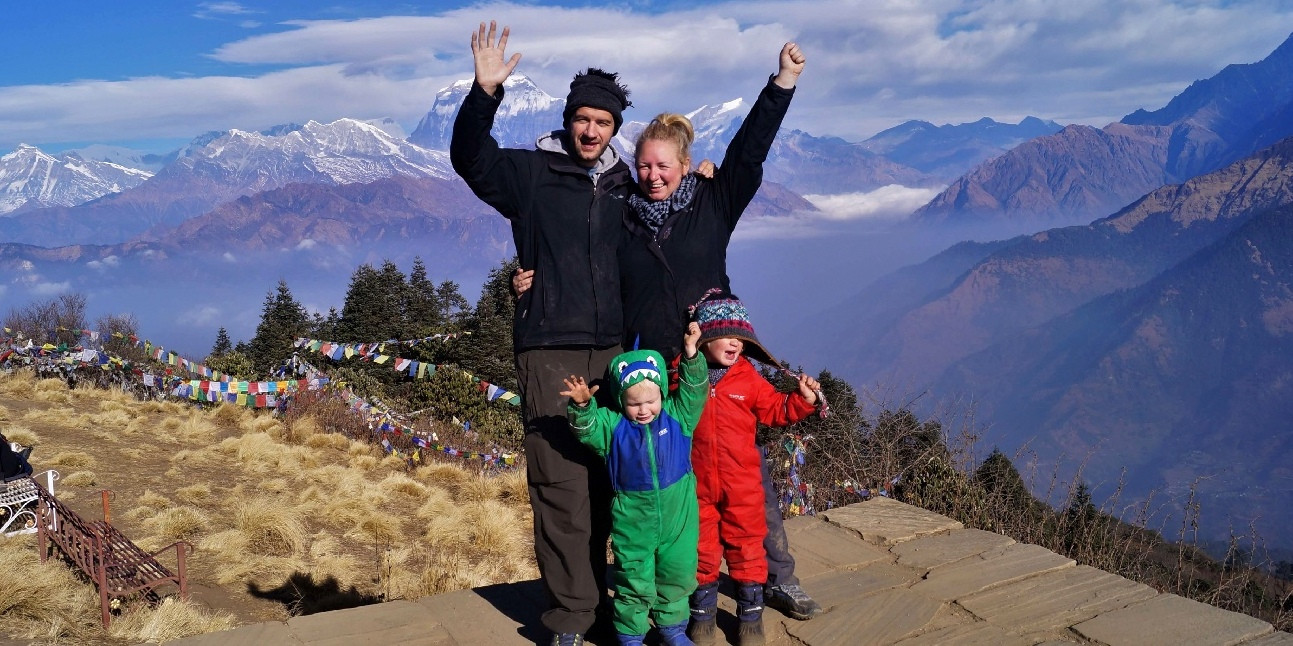Kathmandu Valley
The Kathmandu Valley, nestled in the heart of Nepal, serves as a cultural and historical epicenter of the country, renowned for its rich heritage and vibrant city life. The valley comprises three major cities: Kathmandu, Patan, and Bhaktapur, each boasting distinct personalities and treasures.
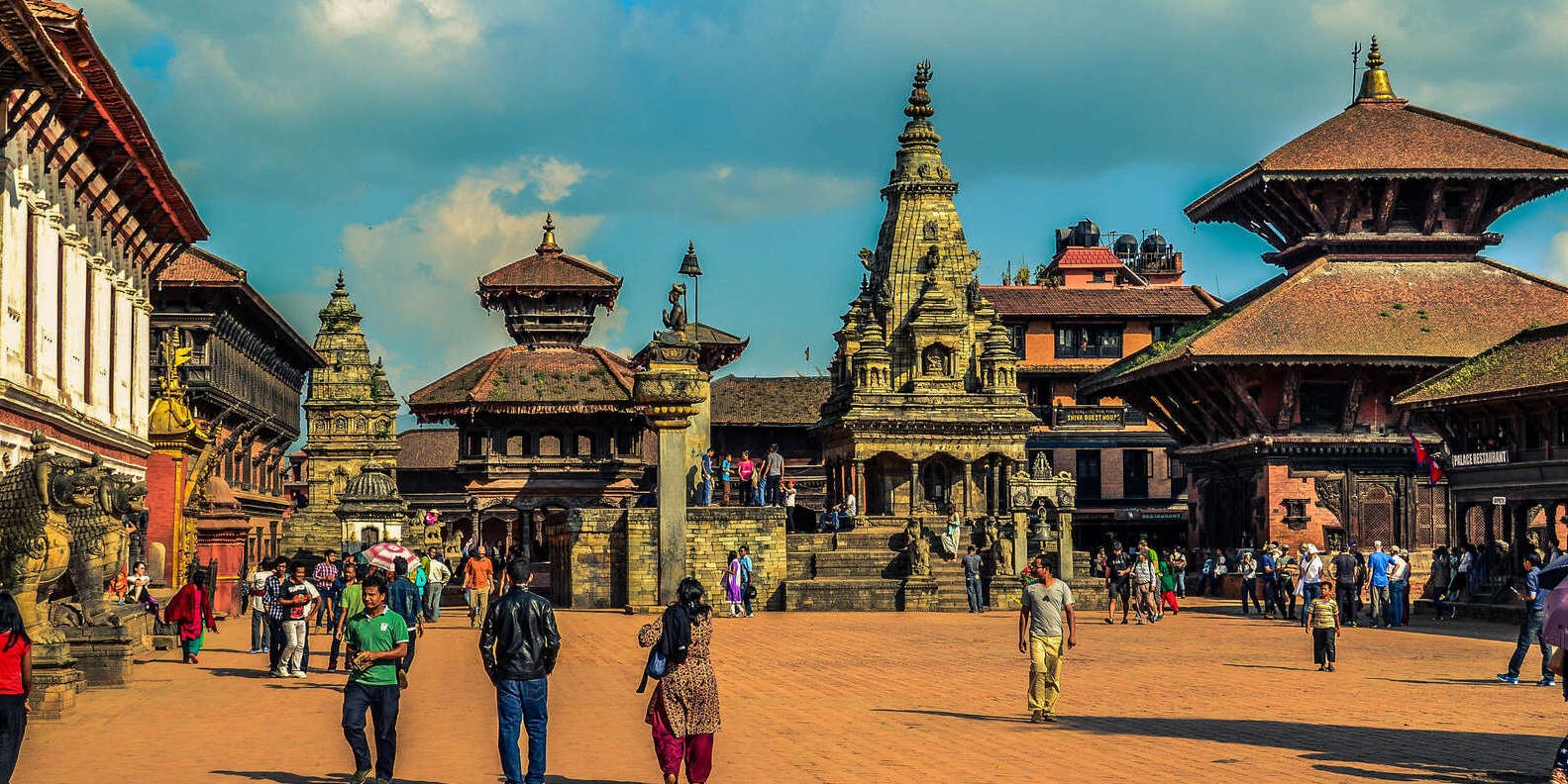
Key Highlights of Kathmandu Valley
Historical and Cultural Sites
-
Kathmandu Durbar Square: Located in the capital city, this complex is a collection of temples, palaces, courtyards, and streets that date back to the 12th and 18th centuries. The square is a UNESCO World Heritage Site, known for its exquisite craftsmanship and architectural brilliance.
-
Swayambhunath Stupa: Often referred to as the Monkey Temple, this ancient religious complex perched atop a hill in the Kathmandu Valley offers panoramic views of the city and is a sacred site for both Hindus and Buddhists.
-
Patan Durbar Square: Located in the city of Patan, this square features a concentration of ancient art, architecture, and culture unique to Nepal. It's famous for its intricately carved wooden windows and metalwork.
-
Bhaktapur Durbar Square: This well-preserved square showcases the finest of traditional Nepalese town architecture, with beautiful temples, palaces, and courtyards that speak to the city's medieval roots.
Museums and Educational Sites: The National Museum of Nepal and The Patan Museum provide insights into the rich history and artistic traditions of Nepal. These museums house an extensive collection of artifacts that trace the cultural and religious evolution of this Himalayan nation.
Local Life and Traditions:The Kathmandu Valley is a melting pot of various cultures and traditions. Visitors can experience local life by walking through the bustling Asan Market or observing local artisans at work in the potters' square in Bhaktapur.
Religious Practices and Festivals: The valley is a focal point for many religious festivities and rituals, including the spectacular Indra Jatra and Dashain festivals, which are celebrated with much fanfare and provide a deep insight into the local religious and cultural practices.
Culinary Experiences: Nepalese cuisine is a significant part of the cultural experience in Kathmandu. From sampling momo (dumplings) to enjoying traditional Newari feasts, visitors can explore a variety of local flavors.
The Kathmandu Valley is not just the gateway to treks and adventures in the Himalayas; it is a vibrant tapestry of history, art, and culture that offers a profound and enriching experience for every visitor.
Pokhara
Pokhara, often referred to as the "tourist capital" of Nepal, is a serene and picturesque city nestled at the base of the towering Annapurna mountain range. Known for its tranquil lakes, stunning natural beauty, and adventurous activities, Pokhara is a favorite among travelers seeking both relaxation and adventure.
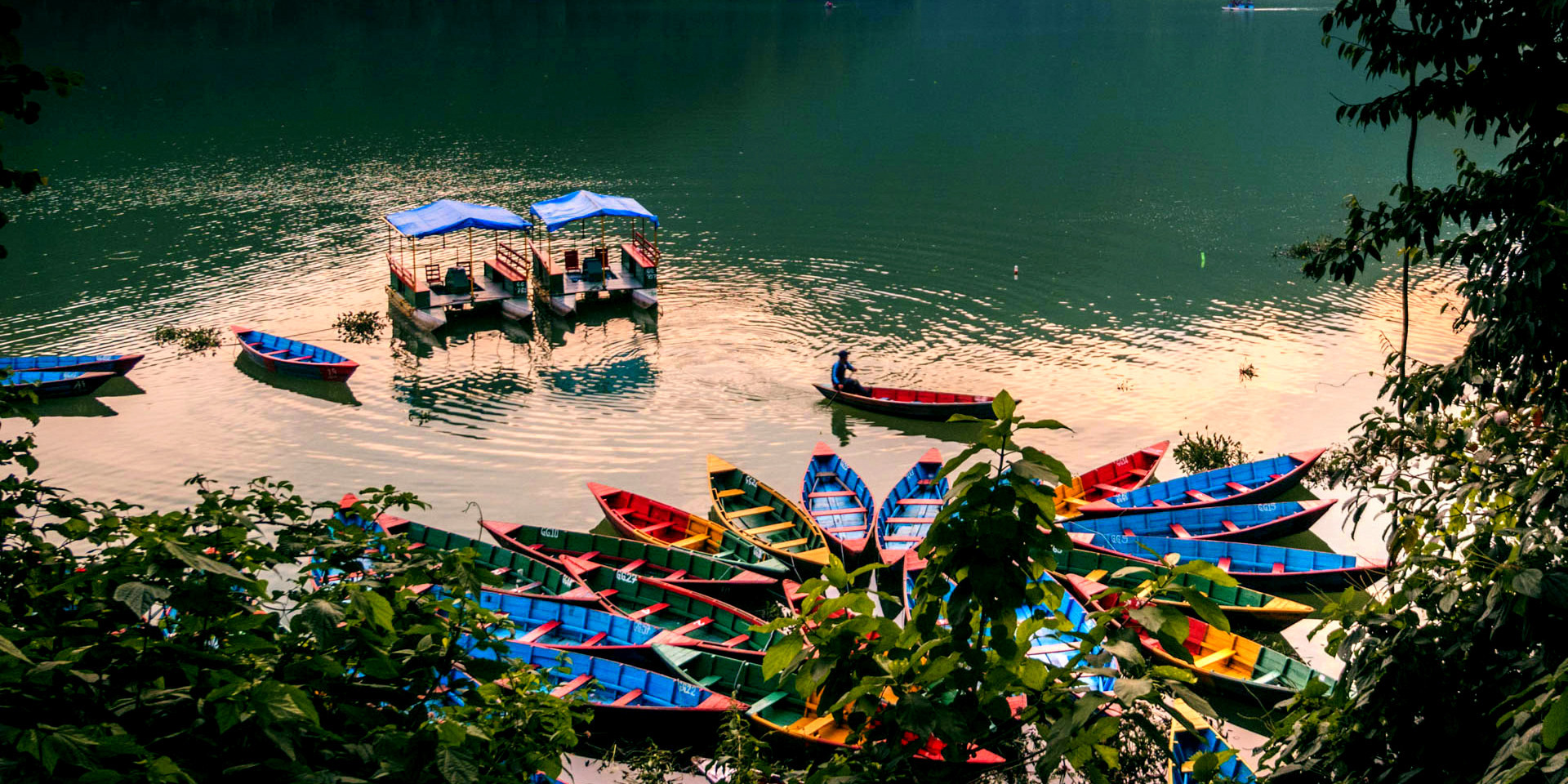
Key Highlights of Pokhara
-
Phewa Lake: The second largest lake in Nepal, Phewa Lake is the center of leisure activities in Pokhara. Visitors can enjoy boat rides across the calm waters, with the majestic Annapurna range reflecting in the lake’s surface. The lake is also home to the Tal Barahi Temple, situated on an island in the middle of the lake.
-
Adventure Sports: Pokhara is a hub for adventure sports enthusiasts. Activities include paragliding from Sarangkot, offering panoramic views of the Himalayas and the valley below; zip-lining; and bungee jumping. For those interested in a more serene adventure, hot air ballooning is also available, providing stunning aerial views of the surrounding landscapes.
-
Trekking and Hiking: The city serves as the starting point for some of the world's famous treks, including the Annapurna Circuit and the trek to the Annapurna Base Camp. Shorter hikes, such as the one to the World Peace Pagoda, are also popular, offering beautiful vistas of the city and its natural surroundings.
-
Davis Falls and Gupteshwor Mahadev Cave: Davis Falls is a stunning waterfall that disappears into an underground tunnel after reaching the bottom. Just across from the waterfall is the Gupteshwor Mahadev Cave, where a large limestone cave holds a revered Shiva temple.
-
Cultural and Historical Sites: The Pokhara Museum and the Gurkha Museum provide insights into the region’s rich history, cultural heritage, and the famous Gurkha warriors. Traditional dance and music performances can also be experienced in cultural centers around the city.
-
Natural Beauty: Aside from the lake and the mountains, Pokhara is blessed with lush vegetation and vibrant wildlife. The nearby Rupa and Begnas Lakes are less crowded alternatives to Phewa, offering peaceful environments perfect for nature walks and picnics.
Pokhara not only captivates with its natural beauty but also offers a relaxed atmosphere and friendly hospitality, making it a perfect destination for travelers looking to experience the essence of Nepal’s enchanting landscapes and rich cultural tapestry. Whether you're seeking adventure, serenity, or a bit of both, Pokhara has something to offer every visitor.
Chitwan National Park
Chitwan National Park, located in the Terai region of Nepal, is one of the country's most popular wildlife sanctuaries and a UNESCO World Heritage Site. It offers a unique ecosystem rich with flora and fauna, including some of the most exciting wildlife viewing opportunities in Asia. This park is particularly famous for its efforts in conserving the endangered one-horned rhinoceros and the Royal Bengal tiger.

Key Highlights of Chitwan National Park
-
Wildlife Safaris: The park is best explored via elephant-back safaris, jeep safaris, or canoe trips along the Rapti River. These excursions offer close encounters with diverse wildlife species, including rhinos, Bengal tigers, leopards, sloth bears, and numerous bird species.
-
Elephant Breeding Center: One of the park's unique features is its elephant breeding center, one of the few of its kind in the world. Visitors can learn about the efforts to increase the population of these magnificent creatures and see baby elephants.
-
Bird Watching: Chitwan is also a haven for bird enthusiasts, boasting over 500 bird species. The best times for bird watching are early morning or late afternoon when the birds are most active.
-
Cultural Experiences: Visitors have the opportunity to engage with the local Tharu community. The Tharu Cultural Museum and Research Center and cultural dance performances offer insights into the rich cultural heritage and traditional lifestyles of the Tharu people.
-
Nature Walks and Jungle Treks: Guided nature walks and jungle treks are available, providing a more intimate experience of the park’s natural environment. These walks are great for spotting smaller wildlife, studying plants, and enjoying the tranquility of the forest.
-
Canoeing: A quiet canoe ride down the Rapti River is another serene way to observe wildlife, particularly water birds, crocodiles, and other aquatic creatures.
Chitwan National Park not only provides thrilling wildlife adventures but also offers a chance to relax and connect with nature. It’s a must-visit destination for nature lovers and those interested in wildlife conservation, providing a comprehensive and memorable experience in the heart of Nepal’s jungle.
Lumbini
Lumbini, the birthplace of Lord Buddha, is one of the most revered spiritual sites in the world and a UNESCO World Heritage Site. Located in the Rupandehi District of Nepal, it serves as a significant pilgrimage destination for Buddhists and visitors from around the globe, drawn to its profound historical and spiritual significance.
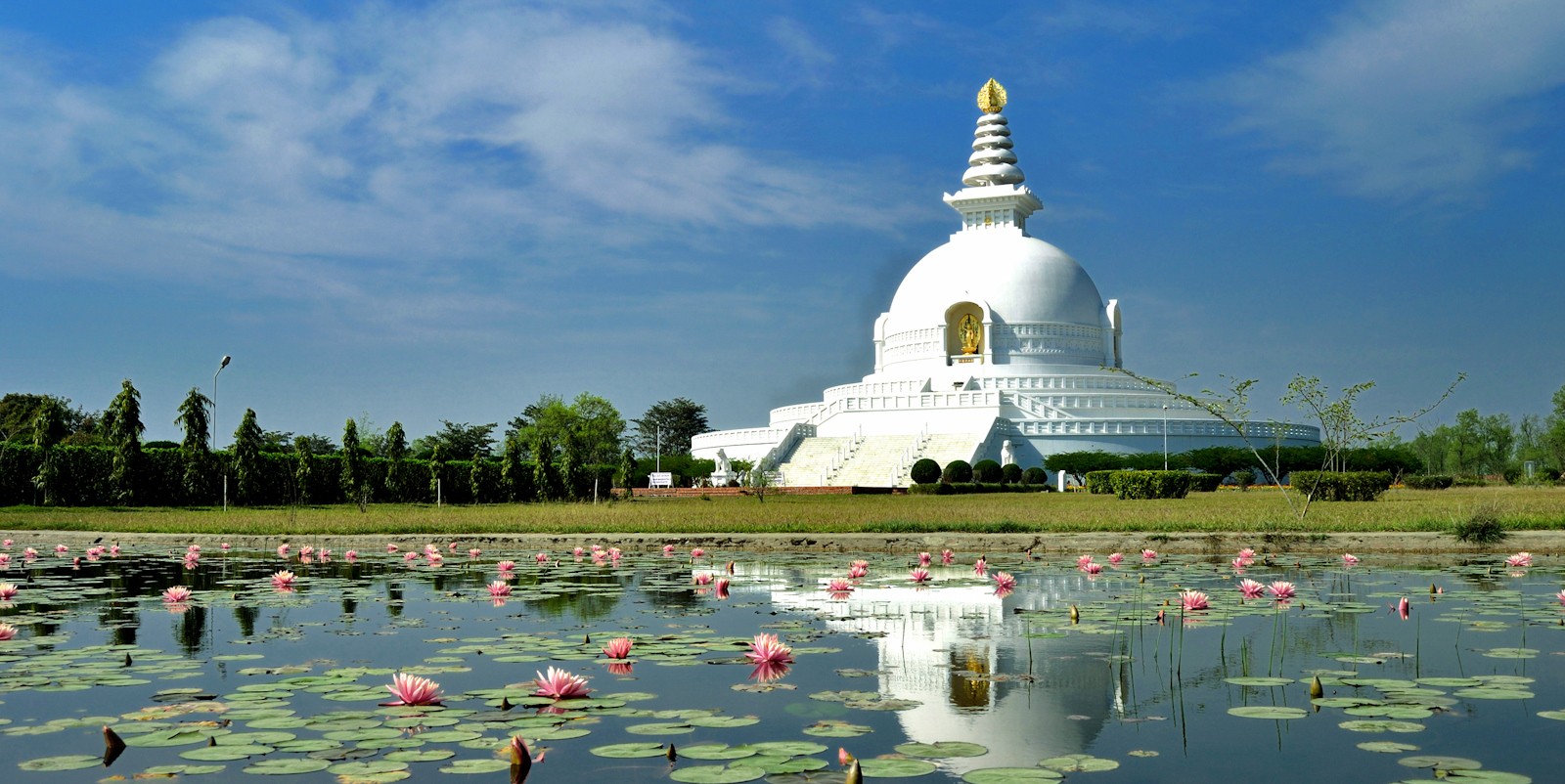
Key Highlights of Lumbini
-
Maya Devi Temple: Central to Lumbini is the Maya Devi Temple, which marks the precise spot where Queen Maya Devi gave birth to Siddhartha Gautama, who later became the Buddha. The temple complex includes the ancient ruins, a sacred pond, and the Ashokan Pillar erected by Emperor Ashoka in 249 BC to commemorate his visit.
-
Monastic Zone: The area is divided into the Eastern Monastic Zone, which houses Theravada monasteries, and the Western Monastic Zone, home to Mahayana and Vajrayana monasteries. Each monastery reflects the architectural traditions of the respective countries that funded them, such as Thailand, China, Myanmar, Germany, and Canada, providing a global perspective on Buddhist architectural diversity.
-
Lumbini Museum: The museum houses artifacts from the region, including Mauryan and Kushana coins, religious manuscripts, terracotta fragments, and stone sculptures, offering insights into the ancient history and cultural heritage of the area.
-
World Peace Pagoda: This stunning white pagoda, built by Japanese Buddhists, is a symbol of peace and a focal point for meditation and reflection. It stands as a reminder of the universal search for peace.
-
The Lumbini International Research Institute: This facility offers resources and facilities for research on Buddhism and the early life of the Buddha. It is a valuable resource for scholars and those interested in deepening their understanding of Buddhist teachings and history.
-
Meditation and Retreat Centers: Lumbini is not just a place of historical significance; it is also a center for learning and spiritual practice. Several meditation and retreat centers offer programs for visitors seeking to immerse themselves in mindfulness and meditation.
Lumbini offers a unique blend of spiritual awakening and cultural exploration. It is not only a destination to explore ancient ruins and architectural marvels but also a place for personal reflection and peace. This sacred site invites visitors to step back from the bustle of daily life and engage in a deeper understanding of Buddhist principles and the quest for enlightenment.
Sunrise View
Experiencing a sunrise in Nepal is a truly magical experience, offering breathtaking views of the Himalayas bathed in golden light. The country’s diverse topography provides numerous vantage points from which you can witness the stunning beauty of the dawn. Here are some of the best places to catch a sunrise in Nepal:

-
Nagarkot: Located just 32 kilometers east of Kathmandu, Nagarkot is renowned for its sunrise views over the Himalayas, including Mount Everest and the Annapurna range. The observation tower at the top of the village provides a panoramic outlook, making it a popular spot for both locals and tourists. Many hotels in Nagarkot are strategically positioned to offer rooms with sunrise views, allowing visitors to experience this spectacular sight from the comfort of their accommodations.
-
Sarangkot: Sarangkot, perched on the outskirts of Pokhara, is another prime location for sunrise enthusiasts. It provides a dramatic view of the sun rising over the majestic Annapurna and Dhaulagiri ranges. The viewpoint is a short hike from the main area of Sarangkot, and many visitors choose to stay overnight to catch the early morning spectacle. This spot is also famous for its paragliding activities, which often take flight shortly after sunrise.
-
Poon Hill: For trekkers, Poon Hill is a must-visit destination. It's a highlight of several trekking routes in the Annapurna region, particularly the Ghorepani Poon Hill trek. Reaching an altitude of 3,210 meters, Poon Hill offers a 360-degree view of more than 20 high peaks. The trek involves an early morning hike to the summit from Ghorepani village to catch the sunrise, illuminating the snow-capped mountains in hues of orange and red.
-
Kala Patthar: For the more adventurous, Kala Patthar presents an unparalleled sunrise experience. Located near Everest Base Camp, this site offers one of the best views of Mount Everest itself. The trek to Kala Patthar is challenging but rewards trekkers with stunning views of the world's highest peak and its neighboring giants. The sunrise from this viewpoint is a surreal experience as the light plays across the faces of these towering mountains.
Whether you’re standing on a hilltop near a bustling city or a high mountain pass in the Himalayas, watching the sunrise in Nepal is an unforgettable experience that combines natural beauty with a sense of immense tranquility.
Jungle Safari
A jungle safari in Nepal is an exhilarating adventure that offers a unique opportunity to explore the country's diverse wildlife and lush habitats. Nepal’s national parks, primarily located in the southern Terai region, provide some of the most accessible and rewarding jungle safari experiences in Asia. Here’s a guide to some of the top destinations and what you can expect from a jungle safari in Nepal:
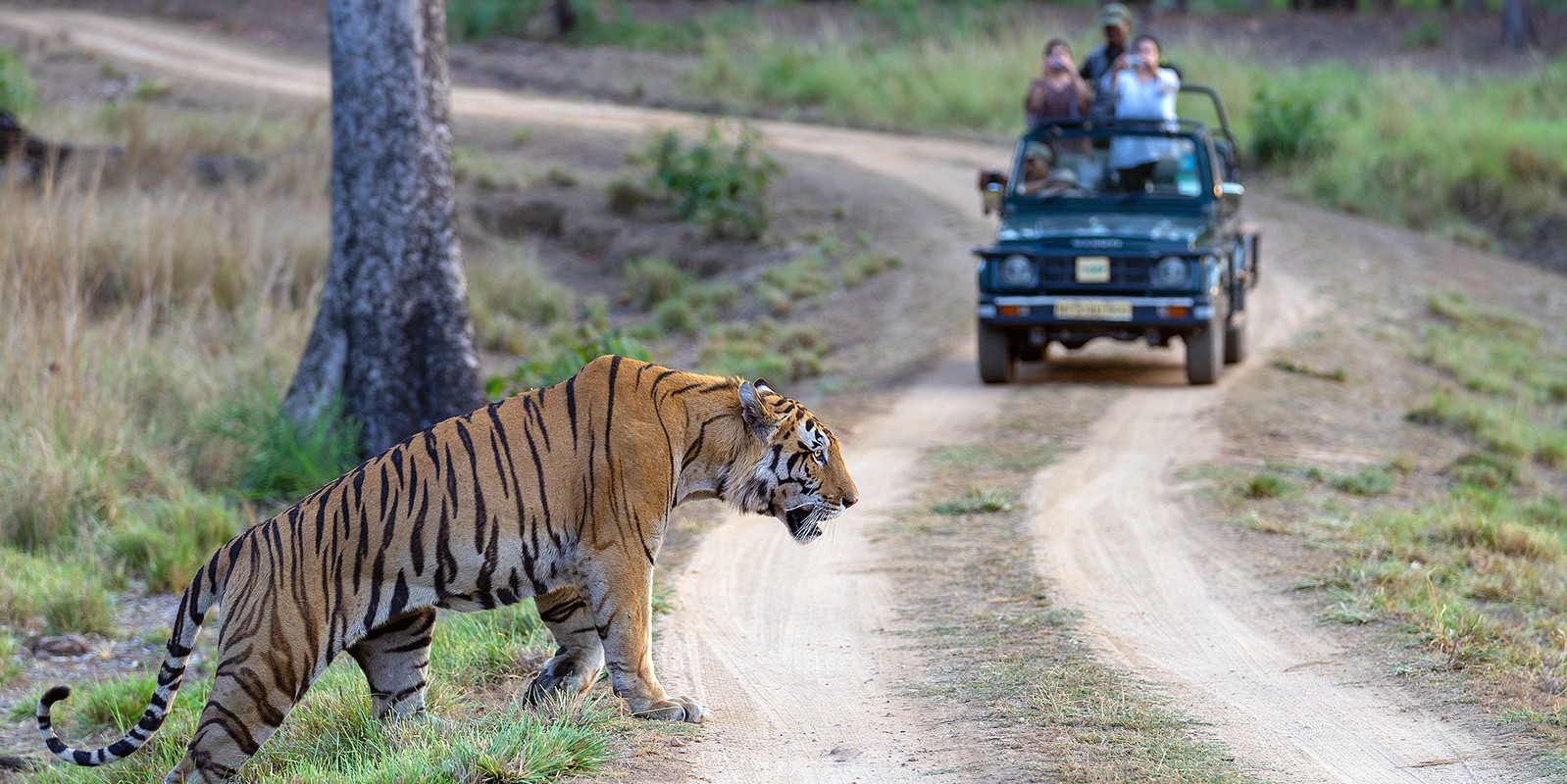
-
Chitwan National Park: Chitwan National Park is the most famous and first national park in Nepal, established in 1973. Located in the Inner Terai lowlands of south-central Nepal, it offers one of the best wildlife-viewing experiences in Asia. The park is home to over 700 species of wildlife, including rare and endangered animals like the one-horned rhinoceros, Royal Bengal tiger, and gharial crocodile. Safari options include elephant-back rides, jeep safaris, and canoe trips along the Rapti River, offering a close-up view of the park's diverse ecosystem.
-
Bardia National Park: Located in the western Terai, Bardia National Park is larger and less frequented than Chitwan, offering a more secluded and authentic safari experience. This park is known for its population of Royal Bengal tigers, and visitors have a good chance of spotting one due to the park’s extensive conservation efforts. Other wildlife includes elephants, one-horned rhinos, and various deer species. Jeep safaris, elephant rides, and guided jungle walks are popular ways to explore the extensive flora and fauna of Bardia.
-
Koshi Tappu Wildlife Reserve: Though smaller than Chitwan and Bardia, Koshi Tappu Wildlife Reserve is a haven for birdwatchers, boasting over 500 bird species, including many migratory varieties. Located in the eastern Terai, it primarily protects the wetland habitat of the Koshi River. Apart from birds, it's also a good place to see water buffalo, dolphins, and other aquatic wildlife. Visitors typically explore the reserve on foot, by jeep, or through boat rides.
-
Parsa Wildlife Reserve: Adjoining Chitwan National Park, Parsa Wildlife Reserve offers a wilder and less developed experience. It's home to a similar range of wildlife as Chitwan but receives far fewer tourists. Jeep safaris and guided walks provide opportunities to see leopards, sloth bears, and various antelope species in a more rugged setting.
A jungle safari in Nepal is not just about wildlife spotting; it's an immersive experience that connects you with nature and helps promote wildlife conservation efforts. Whether you’re a seasoned wildlife enthusiast or a family looking for an educational adventure, Nepal’s national parks offer unforgettable experiences that are both thrilling and informative.
Tips for Top 6 Family Tours in Nepal
Planning a family tour in Nepal can be an enriching and unforgettable experience, offering a unique blend of adventure, culture, and natural beauty. To ensure a smooth and enjoyable trip for travelers of all ages, here are some essential tips:
-
Choose the Right Time to Visit: Best Seasons: The best times for a family tour in Nepal are during the spring (March to May) and autumn (September to November) seasons. These periods offer pleasant weather, clear skies, and the best conditions for sightseeing and outdoor activities. Avoid the monsoon season (June to August) due to heavy rains and potential travel disruptions.
-
Plan a Diverse Itinerary: Mix of Activities: Include a variety of activities that cater to different interests within the family, such as cultural tours in Kathmandu Valley, wildlife safaris in Chitwan National Park, boating in Pokhara's Phewa Lake, and short hikes or nature walks suitable for children.
-
Consider Everyone's Fitness Level: Trekking with Kids: If trekking is on your agenda, choose routes that are known for being family-friendly, such as the Ghorepani Poon Hill trek. Always assess the fitness level of all family members and consult with experts to select appropriate treks.
-
Prioritize Health and Safety: Altitude Sickness: Educate yourself about altitude sickness if you plan to visit high-altitude areas. Stay hydrated and ascend gradually.
-
Book Family-friendly Accommodations: Comfort is Key: Look for accommodations that are known to be family-friendly, offering amenities such as family rooms, childcare services, and restaurants catering to various dietary needs.
-
Pack Wisely: Essentials: Pack according to the season and activities planned. Essential items include warm clothing, comfortable walking shoes, rain gear, sun protection, and any necessary medications. Don't forget to bring entertainment for children during long journeys.
-
Embrace Local Culture and Cuisine: Cultural Sensitivity: Teach your family about Nepalese customs and etiquette to ensure respectful interactions with locals. Try local dishes and participate in cultural activities, providing a valuable learning experience for children.
-
Use Reliable Transportation: Getting Around: Nepal's diverse terrain can make travel challenging. Opt for private transportation for family convenience and safety, especially when travelling between cities or to remote areas.
-
Keep Communication Channels Open: Stay Connected: Carry a local SIM card or portable Wi-Fi device to ensure you can communicate and navigate easily. This is particularly important for emergency situations or changes in plans.
-
Allow for Downtime: Relaxation: Travelling with family can be tiring, especially for young children. Incorporate leisure days into your itinerary to relax, play, and reflect on the experiences shared.
By following these tips, your family tour in Nepal can be a harmonious blend of exploration, learning, and relaxation. Nepal's welcoming culture, combined with its breathtaking landscapes and rich heritage, provides a backdrop for creating lasting memories with your loved ones.
Health and Safety for Top 6 Family Tours in Nepal
When planning a family tour to Nepal, prioritizing health and safety is essential to ensure a smooth and enjoyable experience for everyone involved. Nepal offers a wealth of cultural and natural experiences, but it also poses unique health and safety challenges that travelers should prepare for. Here are comprehensive tips to keep your family safe and healthy during your journey in Nepal:
Health Preparations
-
Vaccinations and Medications: Consult with a travel medicine specialist well in advance of your trip to discuss necessary vaccinations and medications. Commonly recommended vaccines for Nepal include Hepatitis A, Typhoid, and Tetanus. Depending on your itinerary, you may also need vaccinations for Japanese encephalitis and rabies.
-
Travel Insurance: Secure comprehensive travel insurance that covers medical emergencies, evacuation, and hospital stays. Ensure the policy is suitable for all family members and covers activities planned during your trip.
-
Prevent Altitude Sickness: If your itinerary includes high-altitude destinations, educate yourself and your family about the symptoms and prevention of altitude sickness. Ascend gradually to allow acclimatisation, stay hydrated, and consider carrying altitude sickness medication after consulting with a doctor.
-
Food and Water Safety: To prevent gastrointestinal illnesses, consume only bottled or purified water, avoid raw foods, and eat at reputable restaurants. Carrying a water purification method, such as iodine tablets or a portable water filter, can be useful.
-
First-Aid Kit: Pack a comprehensive first-aid kit including rehydration salts, antidiarrheal medication, antiseptic wipes, bandages, and any prescription medications with sufficient supply for your trip.
Safety Precautions
-
Travel Documentation: Keep copies of all important documents, including passports, travel insurance, and emergency contact information, in a secure and easily accessible place.
-
Local Laws and Customs: Familiarise yourself with local laws, customs, and etiquette to ensure respectful interactions. Dress modestly and ask permission before taking photographs of people, especially in rural areas.
-
Transport Safety: Opt for private transportation when possible, especially for long distances or when travelling with young children. Verify the credibility of tour operators and check the condition of vehicles before embarking on activities like trekking, rafting, or paragliding.
-
Stay Informed: Keep abreast of local news and updates from your embassy or consulate. Be aware of weather conditions and potential natural disasters, such as landslides, during the monsoon season.
-
Emergency Preparedness: Know the location of the nearest hospital or medical facility in each area you visit. Teach your family basic emergency procedures and establish a meeting point in case of separation.
-
Environmental Hazards: Protect against sunburn and dehydration by wearing sunscreen, hats, and ensuring adequate fluid intake. Insect repellent is essential to prevent mosquito and tick-borne diseases.
-
Child Safety: Supervise children closely, especially in crowded places, near water, or during adventure activities. Discuss safety rules with them and consider using child locator devices in busy areas.
-
Respect Wildlife: When visiting national parks or engaging in wildlife safaris, maintain a safe distance from animals and follow the guidelines provided by guides and park authorities.
By taking these health and safety precautions, families can greatly reduce the risks associated with travel and focus on enjoying the incredible experiences Nepal has to offer. Remember, preparation and awareness are key to ensuring a safe and memorable family adventure.
Best Time for Top 6 Family Tours in Nepal
Choosing the best time for a family tour in Nepal largely depends on the activities you plan to do and the regions you wish to explore. Nepal experiences four main seasons, each offering different attractions and experiences. Generally, the most favourable times for family tours are during the spring and autumn seasons, when the weather is pleasant and the views are clear. Here's a breakdown of what to expect in each season:
Autumn (September to November)
-
Ideal for Trekking and Sightseeing: Autumn is considered the best time for trekking and sightseeing in Nepal. The monsoon rains have cleared the air of dust, offering crystal-clear views of the Himalayas. The weather is comfortably cool, making it ideal for outdoor activities.
-
Festivals: This season also coincides with several major Nepali festivals, including Dashain and Tihar, offering families a chance to experience Nepal's rich cultural heritage.
Spring (March to May)
-
Beautiful Natural Scenery: Spring is another excellent time for family tours, characterized by moderate temperatures and blooming wildflowers, especially rhododendrons, Nepal’s national flower. The weather is warm, which is great for trekking and exploring the countryside.
-
Outdoor Activities: Besides trekking, it's a good time for wildlife safaris in national parks like Chitwan and Bardia, as the vegetation is not as dense, increasing the chances of spotting wildlife.
Winter (December to February)
-
Lower Altitude Travel: Winter can be cold, especially in the mountains, but it's still a good time to visit Nepal for cultural tours and activities in lower altitudes. The skies are usually clear, offering good mountain views.
-
Fewer Tourists: There are fewer tourists, so it's a great time to explore popular destinations like Kathmandu, Bhaktapur, and Pokhara without the crowds. However, high-altitude treks might be challenging due to snow and cold temperatures.
Monsoon (June to August)
-
Lush Landscapes: The monsoon season brings heavy rainfall, which can disrupt travel plans due to landslides and flooding, especially in the hilly and mountainous regions. However, the rain also transforms the landscape into lush, vibrant greenery.
-
Cultural Insights: It's a unique time to observe agricultural activities and the lush beauty of the valleys and forests. Some regions like Mustang and Dolpo, which lie in the rain shadow of the Himalayas, remain accessible and offer spectacular treks.
Tips for Families
-
Plan Around School Holidays: Consider your children's school schedule when planning your trip. Autumn and spring breaks can be an excellent time for a family tour to Nepal.
-
Book in Advance: During the peak seasons of autumn and spring, it’s wise to book flights and accommodations well in advance to secure the best options and deals.
-
Prepare for the Weather: Regardless of when you visit, prepare for Nepal's diverse climate by packing appropriately. Layering is key, as temperatures can vary greatly between day and night.
The best time for a family tour in Nepal is during the spring (March to May) and autumn (September to November) months when the weather is favorable for a wide range of activities, and the natural and cultural sights are at their most vibrant. However, with careful planning, Nepal can be a rewarding destination year-round, offering unique experiences in every season.
A family tour in Nepal offers an unparalleled blend of adventure, culture, and natural beauty, making it a perfect destination for families eager to explore and bond. With its majestic Himalayan views, rich cultural heritage, and diverse wildlife, Nepal provides a backdrop for unforgettable experiences. The best times to visit are during the spring and autumn months, offering ideal weather for a wide range of activities. Prioritizing health and safety, and planning with care, families can enjoy everything from trekking in the serene mountains to cultural tours in ancient cities. In essence, a family tour in Nepal is not just a trip but a journey filled with discovery, learning, and lasting memories, making it an enriching experience for both adults and children alike.
FAQs for Top 6 Family Tours in Nepal
Q. What is the best time to go on a family tour in Nepal?
A. The best times for a family tour in Nepal are during the spring (March to May) and autumn (September to November) months. These seasons offer pleasant weather, clear skies, and the best conditions for sightseeing, trekking, and other outdoor activities.
Q. Are there family-friendly accommodations in Nepal?
A. Yes, Nepal offers a wide range of family-friendly accommodations, from luxury hotels to cosy guesthouses. Many accommodations cater specifically to families, providing amenities such as spacious rooms, children's play areas, and special meal options.
Q. Is it safe to travel to Nepal with children?
A. Traveling to Nepal with children is generally safe, especially when precautions are taken to ensure health and safety. Choosing reputable tour operators, staying informed about local conditions, and following health advisories can help families enjoy a safe and enjoyable trip.
Q. Can children go trekking in Nepal?
A. Yes, there are several trekking routes in Nepal suitable for children, such as the Ghorepani Poon Hill trek. These treks are less strenuous and offer incredible views, making them a great option for families. It's important to consider the altitude and distance to ensure it's appropriate for your children's age and fitness level.
Q. What cultural experiences can families enjoy in Nepal?
A. Families can immerse themselves in Nepal's rich cultural heritage through various experiences, such as visiting UNESCO World Heritage Sites in the Kathmandu Valley, attending traditional festivals, participating in cultural workshops, and exploring local markets.
Q. How can families prepare for altitude sickness in Nepal?
A. To prepare for altitude sickness, families should plan a gradual ascent, stay hydrated, and consider spending a few days acclimatizing at a moderate altitude before moving higher. It's also advisable to carry altitude sickness medication as a precaution, after consulting with a healthcare provider.
Q. What are some must-visit places for families in Nepal?
A. Must-visit places for families include the historical and cultural sites of Kathmandu Valley, the serene beauty of Pokhara, the wildlife adventures in Chitwan National Park, and the spiritual tranquility of Lumbini.
Q. How do families get around in Nepal?
A. Families can get around in Nepal using various modes of transportation, including private vehicles, taxis, and domestic flights. For sightseeing within cities like Kathmandu and Pokhara, hiring a private vehicle can be a convenient and comfortable option.
Q. What kind of food can families expect in Nepal?
A. Nepali cuisine is diverse, with dishes that cater to different tastes, including plenty of vegetarian options. Families can enjoy traditional dishes like dal bhat (lentils and rice), momos (dumplings), and various curries, as well as international cuisine available in larger cities and tourist areas.
Q. Are there any health precautions families should take before visiting Nepal?
A. families should consult with a healthcare provider before visiting Nepal to discuss vaccinations and preventive medicines for travel-related illnesses. It's also important to pack a travel health kit with essential medications and supplies.
For the Nepal Tour, please click here.
If you are looking for different kinds of Nepal Packages, feel free to contact us.
